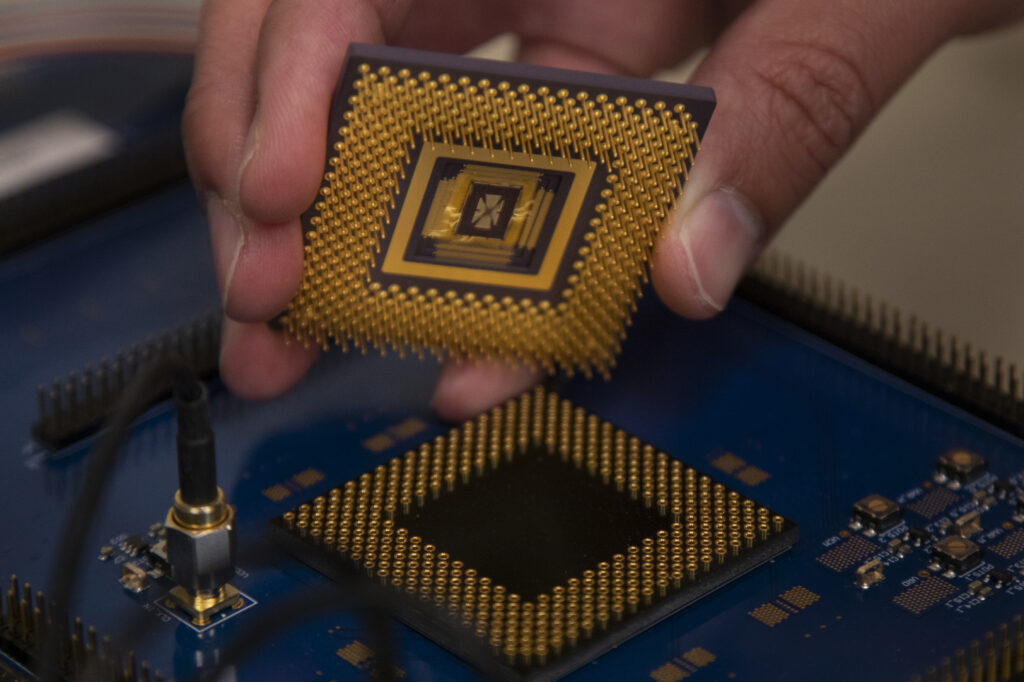Microelectronics & Semiconductors

Microelectronics & Semiconductors is home to some of the most exciting research happening today. This website offers a glimpse into the activities happening within Electrical and Computer Engineering related to this area of national importance.
ECE Microelectronics & Semiconductors holds core strength in Circuits and Systems, Devices, MEMS, Lasers, Materials, Organics, Nanotechnology, Quantum Theory and Technology, and Plasma Science, supported by world-renowned faculty with a legacy of major impact in the field.
Legacy of Achievement
- Computing systems: ECE is home to the Michigan Micro Mote (M3), the World’s Smallest Computer. Faculty in the Michigan Integrated Circuits Lab (MICL) have led the way in in low power computing, and currently specialize in digital circuits and VLSI; wireless/RF; embedded systems and IOT; and analog/mixed signals. Other faculty are developing neuromorphic computing systems and high-density memory systems for AI applications.
- Center for Wireless Integrated MicroSensing & Systems (2000 – present): advancing the design, fabrication, and breadth of the applications for sensor-driven microsensors and systems through research, education, and interactions with industry. Legacy includes the Michigan Neural Probe, implantable devices, chemical and environmental sensors, and infrastructure monitoring devices.
- Teamwork resulting resulted in the development of next-generation technologies for sensing, information processing, navigation, control, and communication, all focused on miniature-size ground and airborne robots through the COMBAT Research Center (2008-2018).
- Innovative research in quantum research, leading to the creation of the U-M Quantum Research Institute.
- Continuous advancements in sustainable energy technologies, particularly in organic photovoltaics, artificial photosynthesis, and solar fuels.
- Long history of leadership in materials research, particularly through molecular beam epitaxy, and including quantum dots and nanowires.
- Faculty in this area are leaders in the generation of intellectual property and translating their technology into companies.
Facilities
In support of education and research, the University has a wide range of infrastructure available that align with microelectronics & semiconductor research and development. The facilities most closely tied to ECE include the following:
Lurie Nanofabrication Facility
The Lurie Nanofabrication Facility is one of the most comprehensive and advanced academic cleanroom facilities in the U.S. The LNF provides a class 1,000/100/10 laboratory with approximately 18,000 sq. ft. of cleanroom and a separate 1,000 sq. ft. class 10,000 instructional laboratory.
Additional Facilities
- 40+ research labs maintained by faculty in the area of microelectronics & semiconductors, plus many more with dedicated group space for computing research
- High-performance computing simulation pool; hundreds of state-of-the-art servers and high-performance cores; industry-standard computer-aided design software
- Advanced optics & photonics labs for next-generation computing
- Extensive equipment for chip and device development
- Anechoic Chamber: 60′ long chamber for antenna and radar system development
- Additional access to labs throughout U-M for unlimited research possibilities.